

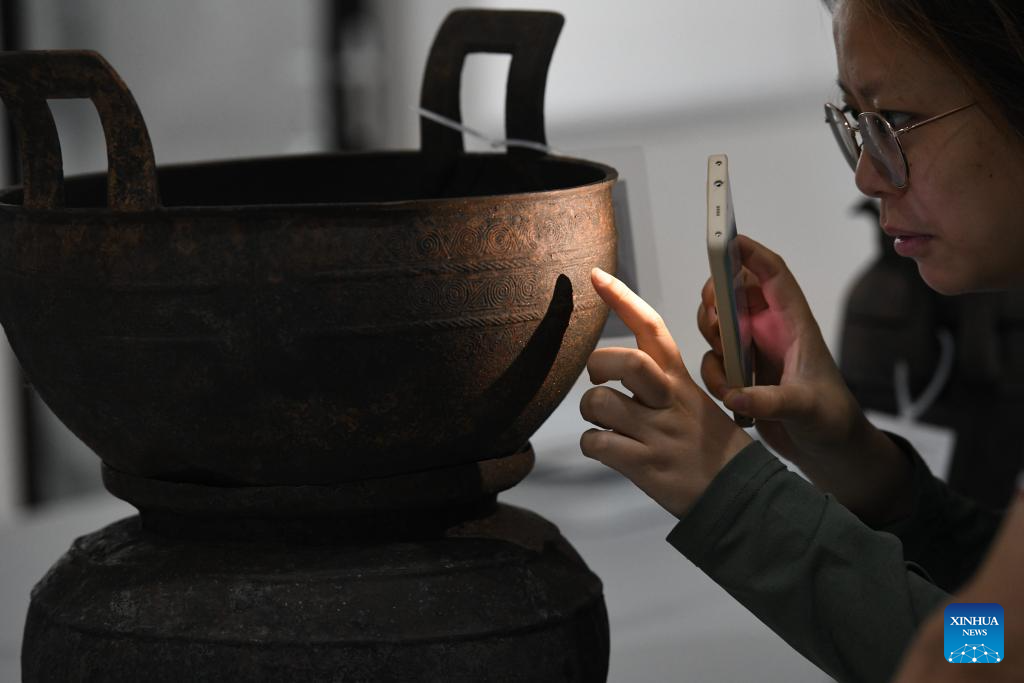
An archaeologist observes a relic unearthed from the Wuwangdun tomb discovered in Huainan, east China's Anhui Province, May 20, 2024.
The archaeological excavation at the Wuwangdun tomb in east China's Anhui Province has yielded major findings, unearthing over 3,000 cultural relics, according to China's cultural heritage administration.
Earlier this year, the National Cultural Heritage Administration (NCHA) confirmed the Wuwangdun tomb as the largest and highest-level tomb of the ancient Chu state, which existed more than 2,200 years ago during the Warring States Period (475 BC-221 BC). (Xinhua/Zhang Duan)
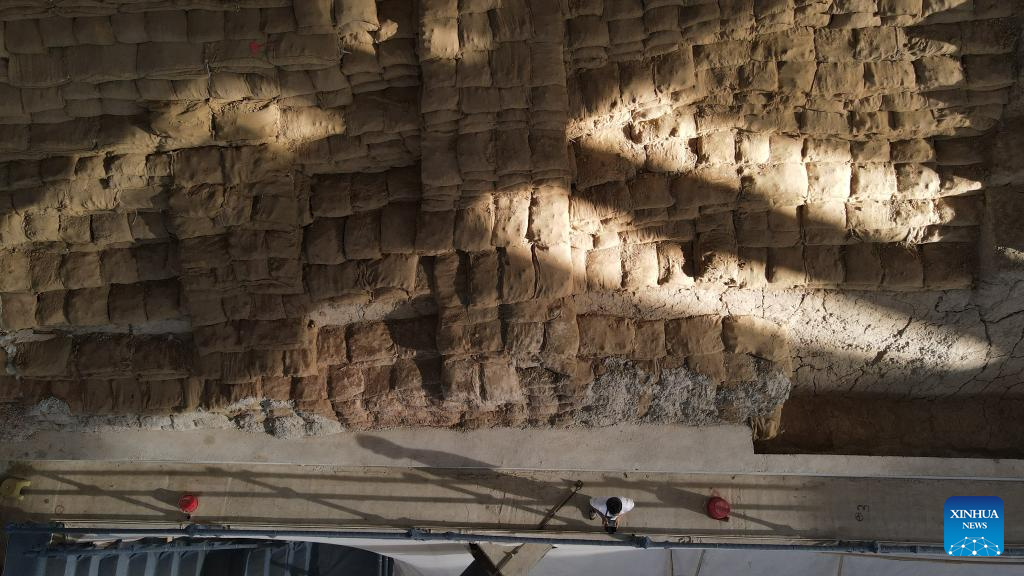
An aerial drone photo taken on May 20, 2024 shows the excavation site of the Wuwangdun tomb discovered in Huainan, east China's Anhui Province.
The archaeological excavation at the Wuwangdun tomb in east China's Anhui Province has yielded major findings, unearthing over 3,000 cultural relics, according to China's cultural heritage administration.
Earlier this year, the National Cultural Heritage Administration (NCHA) confirmed the Wuwangdun tomb as the largest and highest-level tomb of the ancient Chu state, which existed more than 2,200 years ago during the Warring States Period (475 BC-221 BC). (Xinhua/Zhang Duan)

An archaeologist shows a relic unearthed from the Wuwangdun tomb discovered in Huainan, east China's Anhui Province, May 20, 2024.
The archaeological excavation at the Wuwangdun tomb in east China's Anhui Province has yielded major findings, unearthing over 3,000 cultural relics, according to China's cultural heritage administration.
Earlier this year, the National Cultural Heritage Administration (NCHA) confirmed the Wuwangdun tomb as the largest and highest-level tomb of the ancient Chu state, which existed more than 2,200 years ago during the Warring States Period (475 BC-221 BC). (Xinhua/Zhang Duan)
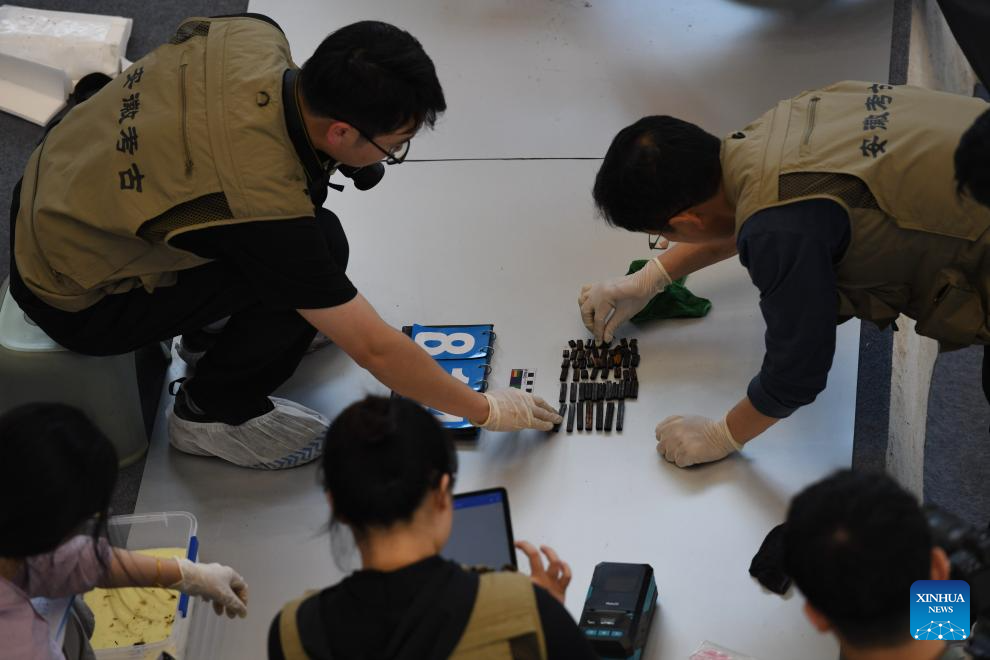
Archaeologists inventory the relics unearthed from the Wuwangdun tomb discovered in Huainan, east China's Anhui Province, May 20, 2024.
The archaeological excavation at the Wuwangdun tomb in east China's Anhui Province has yielded major findings, unearthing over 3,000 cultural relics, according to China's cultural heritage administration.
Earlier this year, the National Cultural Heritage Administration (NCHA) confirmed the Wuwangdun tomb as the largest and highest-level tomb of the ancient Chu state, which existed more than 2,200 years ago during the Warring States Period (475 BC-221 BC). (Xinhua/Zhang Duan)
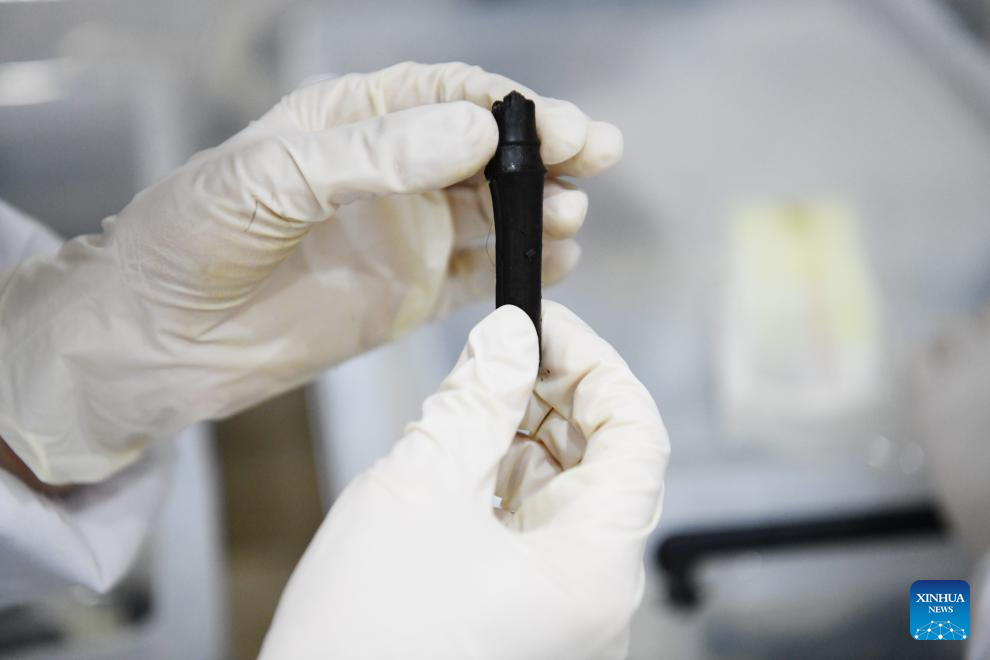
An archaeologist shows a relic unearthed from the Wuwangdun tomb discovered in Huainan, east China's Anhui Province, May 20, 2024.
The archaeological excavation at the Wuwangdun tomb in east China's Anhui Province has yielded major findings, unearthing over 3,000 cultural relics, according to China's cultural heritage administration.
Earlier this year, the National Cultural Heritage Administration (NCHA) confirmed the Wuwangdun tomb as the largest and highest-level tomb of the ancient Chu state, which existed more than 2,200 years ago during the Warring States Period (475 BC-221 BC). (Xinhua/Zhang Duan)
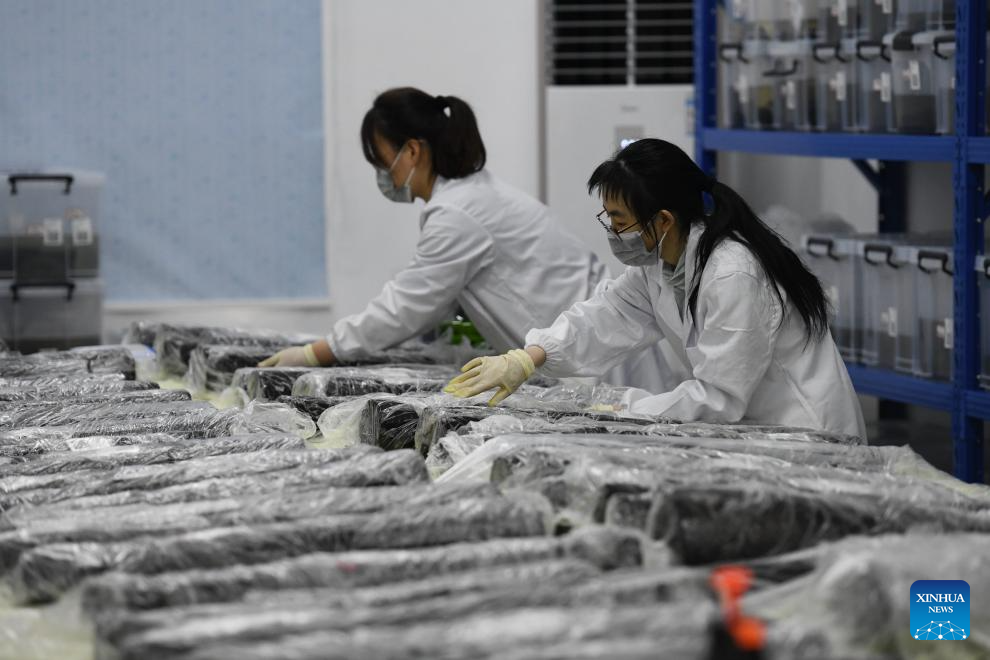
Archaeologists preserve the relics unearthed from the Wuwangdun tomb discovered in Huainan, east China's Anhui Province, May 20, 2024.
The archaeological excavation at the Wuwangdun tomb in east China's Anhui Province has yielded major findings, unearthing over 3,000 cultural relics, according to China's cultural heritage administration.
Earlier this year, the National Cultural Heritage Administration (NCHA) confirmed the Wuwangdun tomb as the largest and highest-level tomb of the ancient Chu state, which existed more than 2,200 years ago during the Warring States Period (475 BC-221 BC). (Xinhua/Zhang Duan)
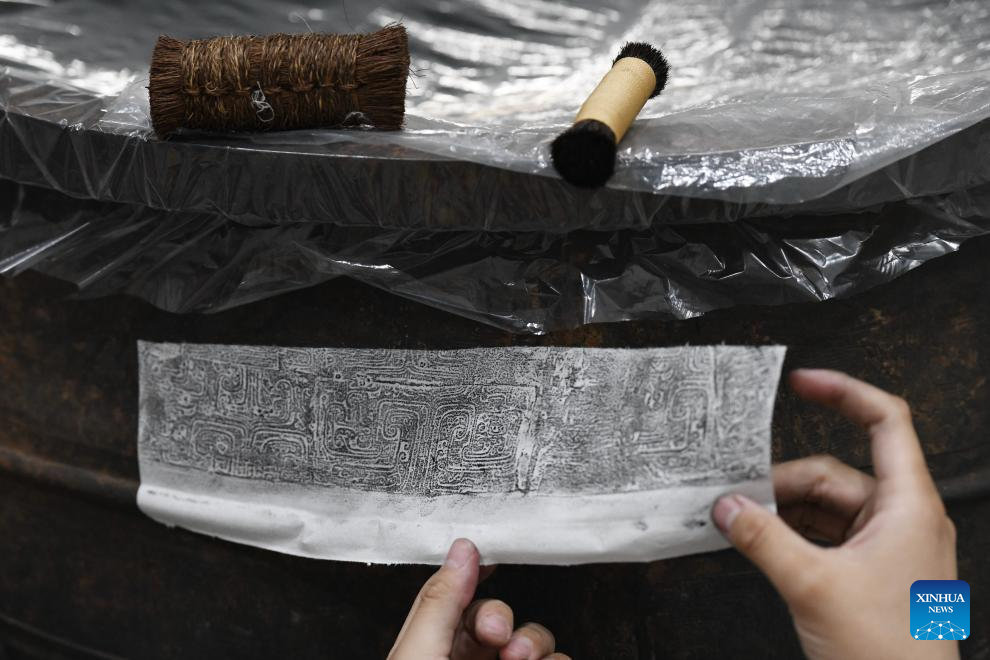
An archaeologist preserves a relic unearthed from the Wuwangdun tomb discovered in Huainan, east China's Anhui Province, May 20, 2024.
The archaeological excavation at the Wuwangdun tomb in east China's Anhui Province has yielded major findings, unearthing over 3,000 cultural relics, according to China's cultural heritage administration.
Earlier this year, the National Cultural Heritage Administration (NCHA) confirmed the Wuwangdun tomb as the largest and highest-level tomb of the ancient Chu state, which existed more than 2,200 years ago during the Warring States Period (475 BC-221 BC). (Xinhua/Zhang Duan)

Archaeologists inventory the relics unearthed from the Wuwangdun tomb discovered in Huainan, east China's Anhui Province, May 20, 2024.
The archaeological excavation at the Wuwangdun tomb in east China's Anhui Province has yielded major findings, unearthing over 3,000 cultural relics, according to China's cultural heritage administration.
Earlier this year, the National Cultural Heritage Administration (NCHA) confirmed the Wuwangdun tomb as the largest and highest-level tomb of the ancient Chu state, which existed more than 2,200 years ago during the Warring States Period (475 BC-221 BC). (Xinhua/Zhang Duan)
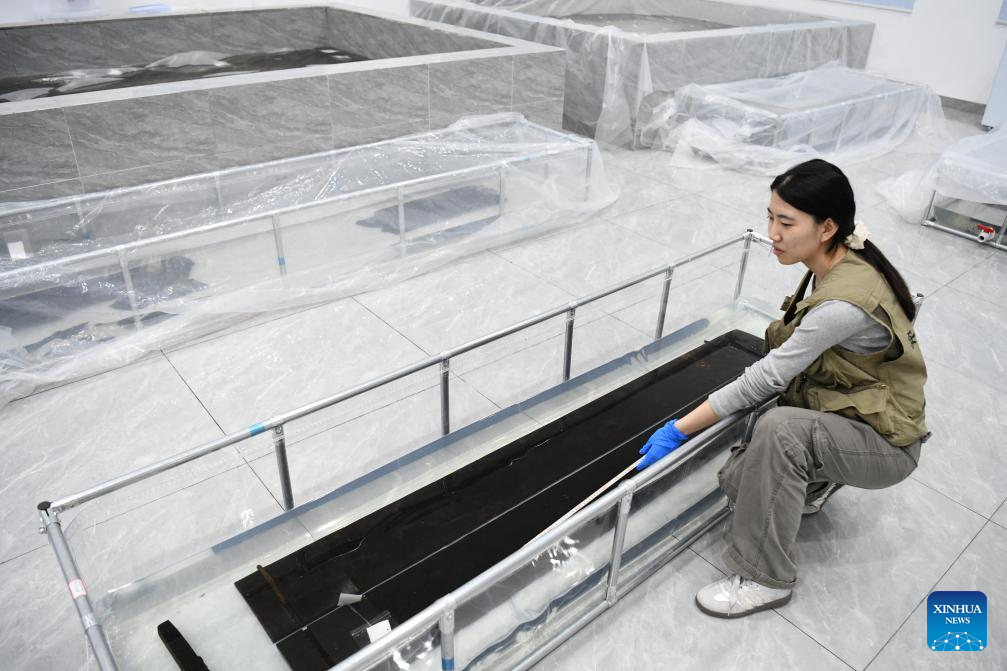
An archaeologist measures a relic unearthed from the Wuwangdun tomb discovered in Huainan, east China's Anhui Province, May 20, 2024.
The archaeological excavation at the Wuwangdun tomb in east China's Anhui Province has yielded major findings, unearthing over 3,000 cultural relics, according to China's cultural heritage administration.
Earlier this year, the National Cultural Heritage Administration (NCHA) confirmed the Wuwangdun tomb as the largest and highest-level tomb of the ancient Chu state, which existed more than 2,200 years ago during the Warring States Period (475 BC-221 BC). (Xinhua/Zhang Duan)
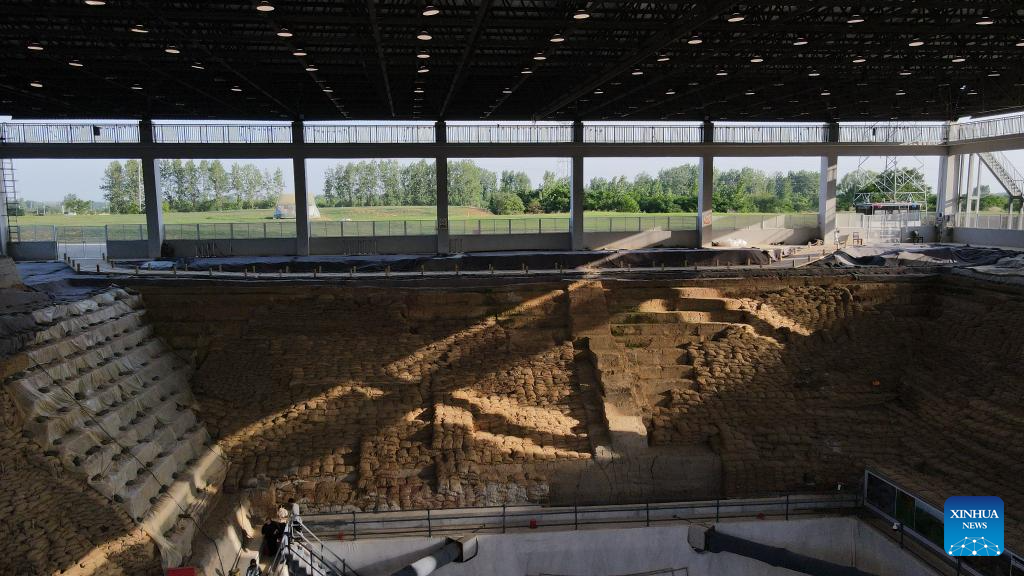
An aerial drone photo taken on May 20, 2024 shows the excavation site of the Wuwangdun tomb discovered in Huainan, east China's Anhui Province.
The archaeological excavation at the Wuwangdun tomb in east China's Anhui Province has yielded major findings, unearthing over 3,000 cultural relics, according to China's cultural heritage administration.
Earlier this year, the National Cultural Heritage Administration (NCHA) confirmed the Wuwangdun tomb as the largest and highest-level tomb of the ancient Chu state, which existed more than 2,200 years ago during the Warring States Period (475 BC-221 BC). (Xinhua/Zhang Duan)
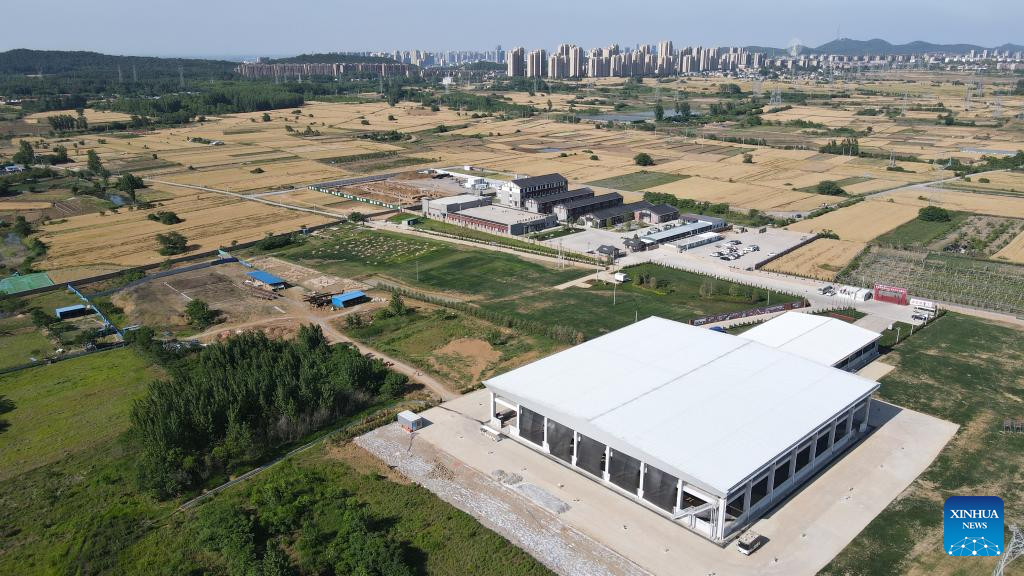
An aerial drone photo taken on May 20, 2024 shows the excavation site of the Wuwangdun tomb discovered in Huainan, east China's Anhui Province.
The archaeological excavation at the Wuwangdun tomb in east China's Anhui Province has yielded major findings, unearthing over 3,000 cultural relics, according to China's cultural heritage administration.
Earlier this year, the National Cultural Heritage Administration (NCHA) confirmed the Wuwangdun tomb as the largest and highest-level tomb of the ancient Chu state, which existed more than 2,200 years ago during the Warring States Period (475 BC-221 BC). (Xinhua/Zhang Duan)
点击右上角![]() 微信好友
微信好友
 朋友圈
朋友圈

请使用浏览器分享功能进行分享
